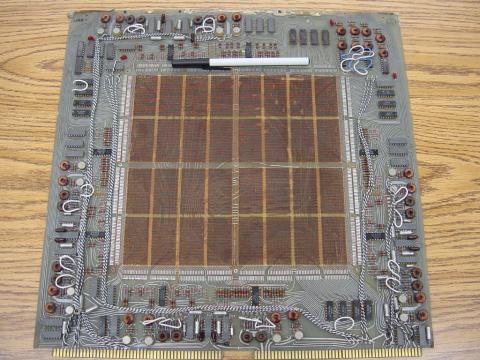Read-only memory (ROM) is similar in design to static or dynamic RAM circuits, except that the “latching” mechanism is made for one-time (or limited) operation.
The simplest type of ROM is that which uses tiny “fuses” which can be selectively blown or left alone to represent the two binary states.
Obviously, once one of the little fuses is blown, it cannot be made whole again, so the writing of such ROM circuits is one-time only. Because it can be written (programmed) once, these circuits are sometimes referred to as PROMs (Programmable Read-Only Memory).
However, not all writing methods are as permanent as blown fuses. If a transistor latch can be made which is resettable only with significant effort, a memory device that’s something of a cross between a RAM and a ROM can be built.
Such a device is given a rather oxymoronic name: the EPROM (Erasable Programmable Read-Only Memory). EPROMs come in two basic varieties: Electrically-erasable (EEPROM) and Ultraviolet-erasable (UV/EPROM).
Both types of EPROMs use capacitive charge MOSFET devices to latch on or off. UV/EPROMs are “cleared” by long-term exposure to ultraviolet light. They are easy to identify: they have a transparent glass window which exposes the silicon chip material to light.
Once programmed, you must cover that glass window with tape to prevent ambient light from degrading the data over time. EPROMs are often programmed using higher signal voltages than what is used during “read-only” mode.

